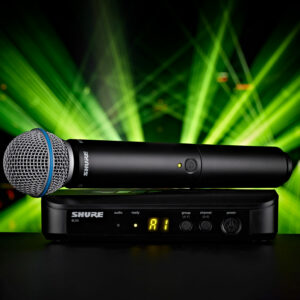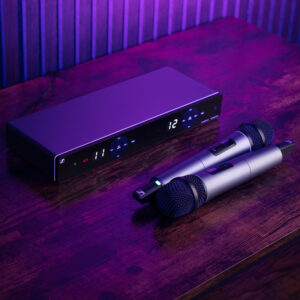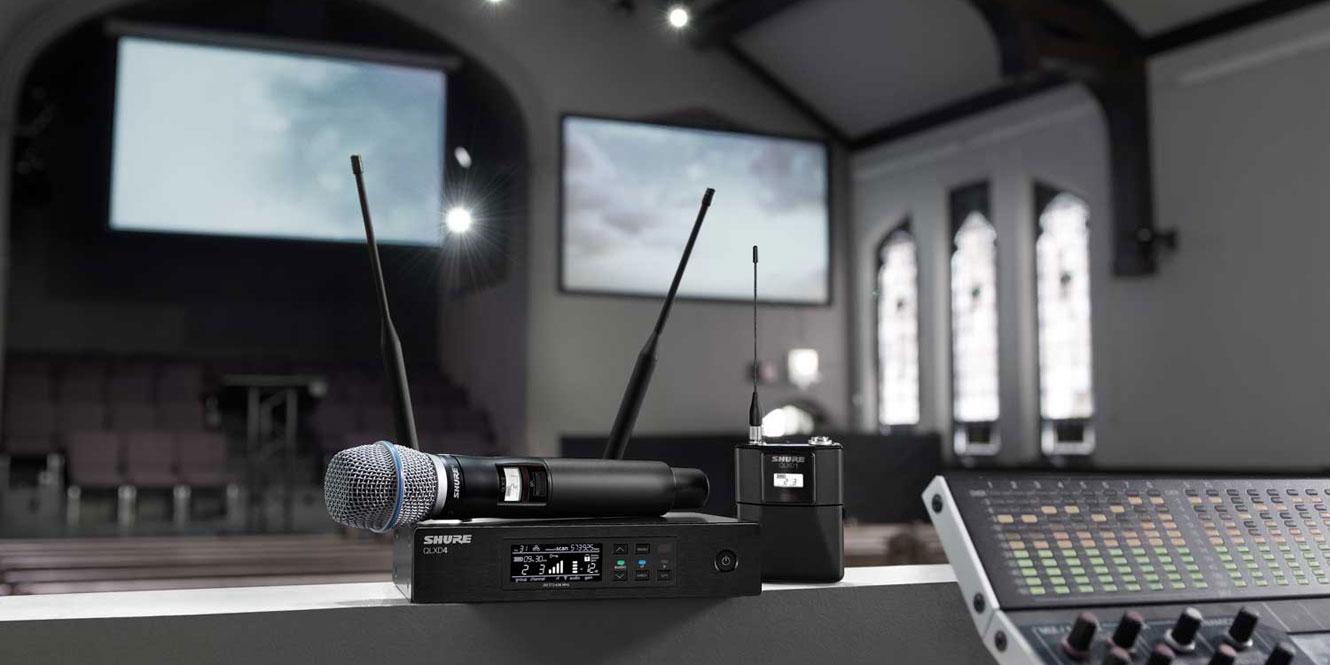Wireless microphone systems are a great way to take your live performances to the next level. But which is better: analog or digital wireless microphone systems? This depends on your specific needs – whether you prioritise sound quality, security, latency, or RF performance – or a combination of these.
In a hurry?
Let’s quickly sum up the difference between analog and digital systems…
If you’re looking for better sound quality and RF performance, digital systems have the edge. If you want little to no system latency, analog systems are your best bet.
But – as you might expect – the full answer is not as simple as this.
Sound quality
In general, digital microphone systems are better if you want clear, interference-free sound. This is because their transmitters use digital encoding to send audio signals over the air. And when decoded by the receiver, it maintains the full dynamic and frequency range of the incoming audio signal.
Analog system transmitters use compression when generating RF signals to send over the air to receivers. This results in a loss of both dynamic and frequency range. However, buying more advanced analog systems will reduce this.
Latency
 Analog microphone systems have next to no latency, so will always beat digital systems in this area.
Analog microphone systems have next to no latency, so will always beat digital systems in this area.
Even entry-level analog systems will have lower latency than most high-end digital systems.
The latency of digital systems varies from product to product.
An entry-level digital system with higher latency would work for conferencing but could cause issues for live music.
However, if you opt for a more high-end system, the latency tends to be much lower, to the point where it’s not an issue you need to worry about.
Latency used to be a bigger issue for digital wireless systems but it isn’t as much now. Having said this, you should always check whether the latency is acceptable for you before purchasing a digital system.
RF performance
The RF performance of digital and wireless systems is determined by the part of the spectrum they’re in. Analog and digital systems can operate in the UHF range. In this case, digital systems are twice as efficient, meaning they can operate with twice as many microphones.
However, digital systems operating in the 2.4 GHz range can only handle four to five systems. So, digital systems aren’t always the best option for system expansion.
In terms of interference, this happens in both types of systems. It can be avoided by carefully planning your wireless system and the frequency band you’re going to use.
Security
Digital microphones are better for security as you can encrypt the outgoing signal, which is not possible with analog systems. This is important if you’re broadcasting sensitive information with your system – i.e., for a government conference.
Not all digital systems will have the option for encryption, however. So, this is worth checking if you’re choosing digital wireless for security reasons.
FAQs
 Are wireless microphones analog or digital?
Are wireless microphones analog or digital?
Both analog and digital wireless systems use transmitters that generate an analog carrier. The type of system differs in the way the transmitter creates an analog RF signal. So, all wireless microphones are analog.
What’s the difference between analog and digital microphones?
Analog and digital microphone systems differ in how they generate their RF signal. Analog transmitters compress audio signals and send them over air, and a receiver expands them. Digital transmitters encode audio as a digital signal and send them over air, and a receiver decodes them.
Which is better: UHF or VHF wireless microphones?
UHF microphones have clearer sound and a more stable connection than VHF mics. As well as this, VHF microphones more commonly have sound interference. If you use UHF microphones, you get a much wider and larger frequency range, resulting in less interference and a more stable signal.
Is 2.4GHz analog or digital?
If a wireless microphone system is 2.4GHz, it will always be digital. This frequency band operates between 2.400GHz and 2.483GHz in 83MHz of spectrum. UHF systems typically operate at a much lower frequency band and can be both analog and digital.
Final thoughts
If you’re looking to invest in a wireless microphone, you’re, hopefully, more informed about the difference between analog and digital systems now. While there are benefits and drawbacks to both, the system’s quality plays a large part in this as well.
At Gear4music we have a wide range of wireless microphone systems to choose from. This includes the new Shure GLX-D+ Wireless Systems, which have dual-band frequencies, uncompressed audio, long-lasting rechargeable batteries, and much more.













0 Comments